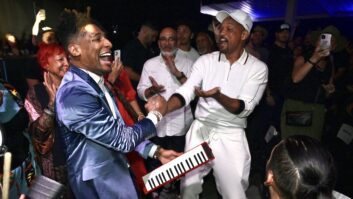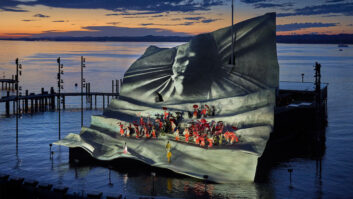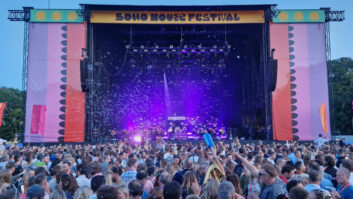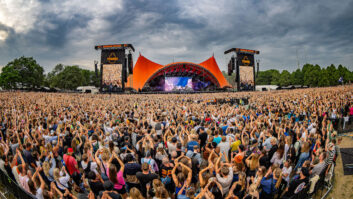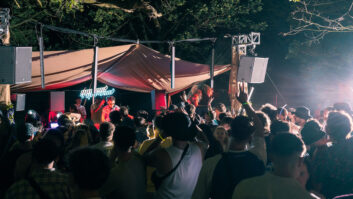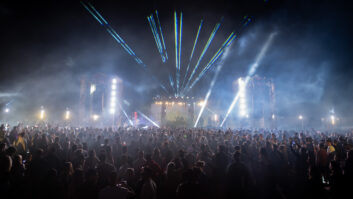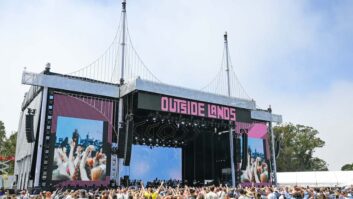It’s a universal truth, regardless of where your festival is located, that making it happen is never easy, particularly if it is facilitated by working with local civic organizations. Underlining that fact, sister publication PSNE spoke with Francis Geron last year about running the annual three-day FiestaCity festival. 2017 will see the 15th edition of the event, which regularly attracts 70,000 people to Verviers in Belgium.
Who are you and what do you do?
Francis Geron – I select the bands that play at the ‘Spirit of 66’ club in Verviers. The club opened in 1995 and rapidly became a popular venue for live concerts by local bands from the Liège area. Today, we stage up to 20 shows per month. We’re the only venue inviting bands like Camel, Pavlov’s Dog, Uriah Heep and guitarists like Robin Trower or Pat Travers—bands from the past but with extremely loyal and motivated fans, willing to travel from anywhere in Belgium, Germany and France. I also take on the organization, programming and technical side of FiestaCity.
How did you get started in the business?
I started playing music in the early ’60s. As a bass player, I toured with Pierre Rapsat until 1979. In 1995, I helped my son Ronald to rebuild an old cinema in the center of Verviers, which then became the Spirit of 66.
Where do you do it?
FiestaCity is staged in the very center of Verviers; alongside the main stage on the Place des Martyrs, and a stage at “Spirit of 66”, we set up two other stages.
How did you get involved with FiestaCity?
I was asked by the city of Verviers to set up the festival and take care of the practical side of the three-day free festival. I work as a volunteer: it’s the challenge and the cosiness, being together with a great team that are the reward.
What’s been your biggest success to date ?
We’ve had many headliners over the years, but the festival really attracted a massive crowd in 2011 when we had Supertramp’s Rodger Hodgson, 10cc, (Belgian pop band) Puggy and Uriah Heep playing. By then, FiestaCity had become a household date on the festival calendar, attracting several tens of thousands of visitors. But in 2011, we had to take extra security measures near the main stage. Since then, the festival has kept growing and today, I feel like we are near the maximum capacity of the available public space. The fact that we don’t have ‘edgy’ bands on the stage and that the program appeals to a very broad audience, with artists from Axelle Red to The Stranglers, adds up to our popularity.
What is the issue that never seems to go away, the biggest challenge?
The festival takes place under the umbrella of the non-profit organization Verviers Music Festivals. We get an annual subsidy from the city of Verviers and the Liège province, adding up to a festival budget of 250,000 euros. That pretty much covers the production cost and the artist budgets, but the challenge we face annually is the quest for financial resources allowing to continue organizing the festival. And, of course the (Belgian) weather—people seem to hide in bars and cafés when it’s raining; the first dry stretch makes the squares fill up with crowds again.
Are there any implications in being a publicly financed festival?
In terms of logistics, we are committed to carry out a thorough market survey every year: a minimum of three entries from three different suppliers for elements such as stage, rigging, audio and lighting. We have been working with audio rental company Arto since day one. (For the main stage, Arto provides a system consisting of Nexo STM M28, B112, S118 with a Midas Heritage 2000 console on FOH and Nexo PS15 and a Yamaha PM5D-RH on monitors.)
Not only do they have the best equipment available on the market, they also manage to enter the best tender for the festival. They cater for the main stage; the two other street stages are amplified by Euromusique and Art Scenic.
What are the consequences of staging an open air festival in the middle of a city?
In terms of noise hindrance, I’m happy to say we’re not having any problems at all. We don’t have techno or heavy bass on stage. You cannot accuse artists such as Rodger Hodgson or (French singer) Pierre Perret of excessive decibels. And we’re pretty much relying on ‘autocontrol’: if the music’s too loud, I turn it down, it’s as simple as that. We also make sure that the last concerts are finished at 1am.
How can a city festival play a role in building a positive image?
FiestaCity is undoubtedly a key element in Verviers’s image as a city. Everybody’s happy when the festival is on: the audience, the bands… we don’t have financial issues. After we had the terrorist attacks in January last year, I’m convinced that FiestaCity gave a positive boost to Verviers. I’m well aware that you cannot compare FiestaCity to festivals like Rock Werchter or Pukkelpop, but we have built a strong brand image. Verviers is not a wealthy city, but we bring international headliners to a free concert, positively focusing on the city.
FiestaCity
www.fiestacity.be
